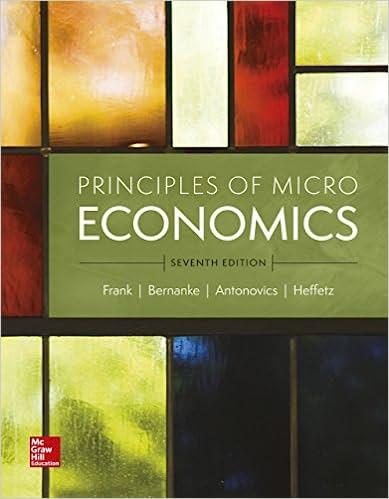


.Microeconomics Tutor please
l'here is currently a highly competitive labour market for clerical workers in Edinburgh with no union representation. They are considering voting to have a .lI'liOIl represent them in negotiations with employers. Employers would be in no Josition to exert monopsony power in their employment of clerks due to the large number of employers in the market. Labour supply and demand are given by: L8 = 50w 100 Ln = 650 - 25w a. How many clerical workers are currently employed in Edinburgh and what is the current wage rate [no union representation]? b. If the workers vote for having a union how many workers will be employed and what will the wage rate be assuming that the union maximises economic rent earned by workers? c. If the workers vote for having a union how many workers will be employed and what will the wage rate be assuming now that the union maximises aggregate wages of all workers hired? 3. Follow the analysis we did in class to build your demand curve (just like the 'Facebook' example): Suppose that there are 200 people in a market for a new fitness app. Maybe it's fun to log into your own account and admire your own results and records and there- fore consumers have a value for this feature alone. This base value, v, for access to the account is uniformly distributed between $1 and $50. But there's a social aspect to the site that causes it to exhibit network externalities (e.g. Strava, for example). Suppose that the total value to person v is v .n where n is the number of people who are also consuming the good. Imagine access to the app can be supplied through a constant returns to scale technology so the supply curve is a flat line at the price level that equals average cost. Assume this average cost is $979 (users upload a tremendous amount of content!). (a) 4 points At some given point in time there's 11 users on the app. What happens to the network size? Explain! (b) 4 points At some given point in time there's 30 users on the app. What happens to the network size? Explain! (c) 4 points At some given point in time there's 60 users on the app. What happens to the network size? Explain!The Ajax Coal Company is the only employer in its area. Its only variable input is labour, which has a constant marginal product equal to 5. Because it is the only employer in the area, the rm faces a supply curve for labour given by W = 10 + L, where W is the wage rate and L is the number of person-hours employed. Suppose the rm can sell all it wishes at a constant price of 8. a. How much labour does the firm employ, how much output does it produce, and what is the wage? b. Suppose now the firm sells a special kind of coal such that it faces a downward-sloping demand curve for its output. In particular, assume that Ajax faces the demand curve given by P = 102 1.96Q. How much labour does the rm employ, how much output does it produce, what price does it set for the output, and what is the wage? c. Assume that Ajax still faces the demand curve P = 102 1.96Q, but now further assume that Ajax has five labourers under contract to produce coal at a wage of 15. If Ajax has the option of hiring additional labourers at a higher wage without increasing the wage to the five labourers already under hire, will Ajax increase its labour force? Explain. ANSWER: a. The rm will employ workers according to MRPL = MF C . MRPL = MR'MPL. SOMRPL = 8'5 = 40 andMFC = 10 + 2L












